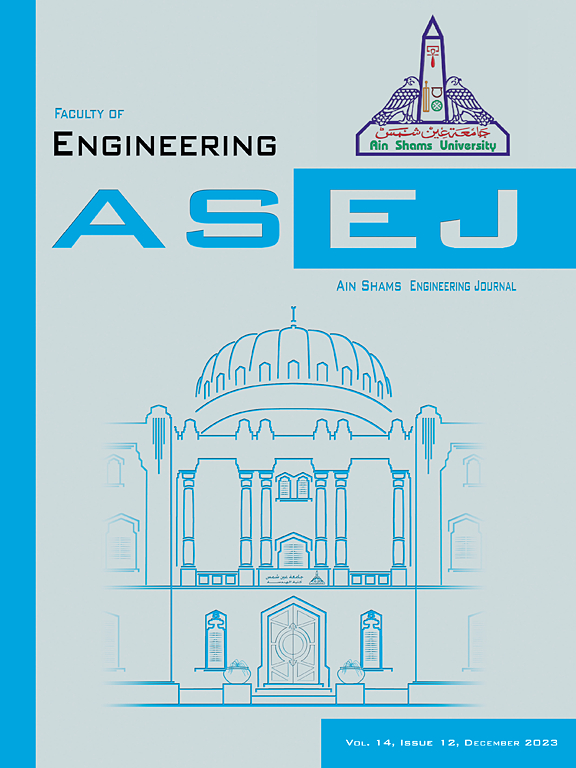Multi-stage identification framework for steam generator modeling with gap metrics
IF 6
2区 工程技术
Q1 ENGINEERING, MULTIDISCIPLINARY
引用次数: 0
Abstract
This paper focuses on the modeling of nonlinear multi-input, multi-output coupled steam generators in nuclear power plants. To address the problem of insufficient modeling accuracy due to the low signal-to-noise ratio of closed-loop operation sampling, a multi-stage identification framework integrating the least-squares method, instrumental variables method, and predictive error method is proposed. This framework is divided into three stages: parameter initialization, initial value estimation, and parameter optimization, aiming to progressively enhance the quality of model identification. Moreover, to address the complicated problem of piecewise linearization of nonlinear systems, a piecewise linearization strategy based on gap metrics with decreasing intervals from large to small is proposed. The strategy first uses data from large time-domain intervals for model identification, followed by refined time-domain interval data. This approach simplifies the piecewise linearization process and reduces the generation of redundant models. Through extensive simulation validation, this method has demonstrated its effectiveness in the modeling of nuclear power steam generators and valve condition monitoring. The enhancement percentages of the three steam generators are 18.95%, 10.19%, and 48.85%, respectively, highlighting the significant improvement in model accuracy. Additionally, fault monitoring simulations for the steam generator feedwater valve show significant differences between the predicted values and errors of the normal model under simulated fault scenarios. By setting safety thresholds based on historical data, the working status of the valve can be effectively monitored. This paper provides new research ideas and practical solutions for nuclear power steam generator modeling and condition monitoring, contributing to the advancement of related fields.
带间隙度量的蒸汽发生器建模多级识别框架
本文主要研究核电站非线性多输入多输出耦合蒸汽发生器的建模问题。针对闭环运行采样信噪比较低导致建模精度不足的问题,提出了一个集最小二乘法、工具变量法和预测误差法于一体的多阶段识别框架。该框架分为参数初始化、初始值估计和参数优化三个阶段,旨在逐步提高模型识别的质量。此外,针对非线性系统片断线性化的复杂问题,提出了一种基于从大到小区间递减的间隙度量的片断线性化策略。该策略首先使用大时域区间数据进行模型识别,然后使用细化时域区间数据。这种方法简化了分片线性化过程,减少了冗余模型的生成。通过大量的仿真验证,该方法在核电蒸汽发生器建模和阀门状态监测方面证明了其有效性。三台蒸汽发生器的增强率分别为 18.95%、10.19% 和 48.85%,凸显了模型精度的显著提高。此外,对蒸汽发生器给水阀的故障监测模拟显示,在模拟故障情况下,正常模型的预测值与误差之间存在显著差异。通过根据历史数据设置安全阈值,可以有效监控阀门的工作状态。本文为核电蒸汽发生器建模和状态监测提供了新的研究思路和实用解决方案,有助于推动相关领域的发展。
本文章由计算机程序翻译,如有差异,请以英文原文为准。
求助全文
约1分钟内获得全文
求助全文
来源期刊

Ain Shams Engineering Journal
Engineering-General Engineering
CiteScore
10.80
自引率
13.30%
发文量
441
审稿时长
49 weeks
期刊介绍:
in Shams Engineering Journal is an international journal devoted to publication of peer reviewed original high-quality research papers and review papers in both traditional topics and those of emerging science and technology. Areas of both theoretical and fundamental interest as well as those concerning industrial applications, emerging instrumental techniques and those which have some practical application to an aspect of human endeavor, such as the preservation of the environment, health, waste disposal are welcome. The overall focus is on original and rigorous scientific research results which have generic significance.
Ain Shams Engineering Journal focuses upon aspects of mechanical engineering, electrical engineering, civil engineering, chemical engineering, petroleum engineering, environmental engineering, architectural and urban planning engineering. Papers in which knowledge from other disciplines is integrated with engineering are especially welcome like nanotechnology, material sciences, and computational methods as well as applied basic sciences: engineering mathematics, physics and chemistry.
 求助内容:
求助内容: 应助结果提醒方式:
应助结果提醒方式:


